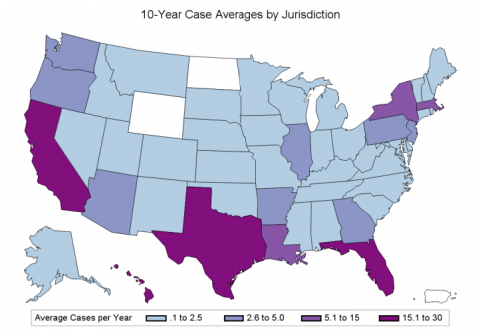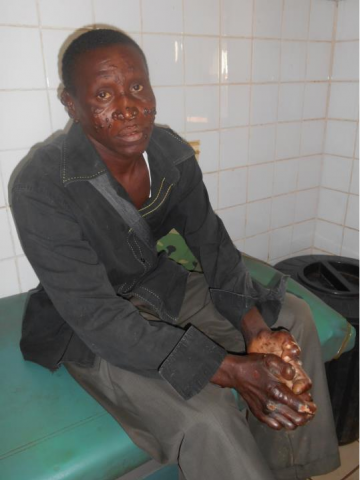Leprosy — Past and Present
Infectious diseases that affect our world are frequent topics of both discussion and study, especially in view of our current COVID-19 crisis and its associated mortality. In spite of modern medicine and antibiotic breakthroughs, many illnesses and fatalities are unfortunately caused by commonplace infections such as pneumonia, influenza, hepatitis, dysentery, and osteomyelitis to name a few. Infections have been part of our human struggle from age to age. It is interesting that very few specific types of infections are mentioned in the Bible. Boils and plagues are mentioned as general types of infections—Job was covered with “sores from the soles of his feet to the crown of his head” 1 —but these could have been caused by various types of illnesses. Fever is mentioned several times in the Bible as both Jesus and Paul healed individuals with fever, but the cause for the fever was not given. The Bible does however mention leprosy as a specific infection in both the Old and New Testaments. Leprosy is also well-known to epidemiologists of modern times. Although leprosy is an uncommon disease in the US, there are countries where there is an active presence of the disease. This article examines leprosy mentioned in the Bible and compares this to our modern management of the disease.
The medical term for leprosy is Hansen’s disease. The disease is named after Gerhard Hanson, a Norwegian pathologist who identified the causative bacteria in 1873. 2 The bacteria responsible for the illness is Mycobacterium leprae. This is a slow growing type of bacteria that is not easily transmitted from person to person. It is thought to be carried in mucosal secretions, and close contact with an infected person is needed to transmit the disease. The majority of individuals exposed to leprosy do not contract the illness. The disease had no cure available until the 1940s with the development of sulfone antibiotics. Currently, leprosy is readily curable with a 12-month course of antibiotics (dapsone, clofazimine, and rifampicin). The World Health Organization reported over 200,000 new cases of leprosy reported worldwide in 2019. 3 In the US, about 150 cases are reported yearly according to the Center for Disease Control. 4 ,5
Early Hansen’s disease causes whitish patches of skin that develop loss of sensation (numbness). The patches gradually progress to other parts of the body and nodules develop in the affected skin. The disease attacks peripheral nerves, which results in muscle weakness and gradual paralysis. The individual’s posture and mobility gradually deteriorate as the disease worsens. Leprosy can affect vision, which can lead to blindness. The nodular aspect of the disease can result in grotesque facial distortion as well as unsightly appearance of the limbs. Ulceration of the skin with the development of secondary infections can result from the loss of peripheral nerve sensation. There is resorption of bone in the hands and feet which renders the limbs with a club-like appearance associated with severe loss of function. Fatality in advanced untreated cases likely results from secondary infections caused by the leprosy.
In current medical management of Hansen’s disease, a biopsy of tissue is done, and a pathologist looks for the typical bacteria seen under a microscope. The bacteria are difficult to grow in culture media. Triple antibiotic therapy is initiated, and the individual is followed with serial examinations to monitor progress. Antibiotic treatment is suggested for twelve months. Three different antibiotics are used as the bacteria has a tendency to develop antibiotic resistance relating to the long duration of treatment. The antibiotic therapy is typically successful in curing the disease. Mortality from Hansen’s disease is rare in our modern times, but the resultant nerve damage and secondary infections can be the source of considerable disability.
Prior to the modern era of medical care, one can easily understand how a person with leprosy would be ostracized from society. The leper would be isolated to avoid spreading the disease. Similarly, affected individuals could only associate with each other forming so called “leper colonies.” Their ability to ambulate would deteriorate with progressive nerve damage, and likely required the use of crutches or a portable cart. The ulcerations on their limbs would fester and become malodorous or foul-smelling. Their physical appearance would become unsightly with distortion of facial features and limbs. They would not have access to communal social events and would face isolation for the remainder of their lives.
Biblical Description of Leprosy
The first mention of leprosy in the Bible occurs in Exodus, chapter 4 where Moses stands in the face of the burning bush. Moses’s hand developed leprosy and was immediately cured under the watchful eye of God himself. God demonstrated to Moses His authority over leprosy (and disease). The Hebrew word for leprosy is “tsara’ath,” which is the same word used throughout the Old Testament. In the New Testament the Greek word for leprosy is “lepra” from which we derive the current name. 6 Leviticus, chapter 13, gives God’s instructions for dealing with an individual with leprosy. The disease was verified by the priest who pronounced the leper unclean. The individual was instructed to live outside the Israelite camp and would not have access to the holy tent of meeting where Moses and the ark were situated. The unfortunate leper was required to cover his face and cry out “unclean! unclean!” to warn those in their vicinity. Leprosy was used by God to reprimand individuals in several instances: Miriam was struck with leprosy when she questioned Moses’s authority in Numbers, chapter 12. Gehazi was struck with leprosy when he disobeyed Elisha in Kings, chapter 5, and King Ussiah developed sudden leprosy when he tried to burn unauthorized incense in the temple in 2 Chronicles, chapter 26. Miriam was healed by Moses’s prayer, but the others died with their leprosy. Elisha was the only prophet that cured leprosy as described in 2 Kings, chapter 5. Naaman, the commander of the Aram army, Israel’s enemy, was healed by following Elisha’s instruction to dip seven times in the Jordan river, and his skin became “like that of a young boy.” Given the social ramifications and cultural stigma of possessing leprosy, these situations demonstrate God’s power and authority over the disease and also of the cure.
In the New Testament, Jesus met ten lepers who “stood at a distance” and cried out to Him for mercy. Lepers were required to distance themselves and were not allowed to intermingle with the population. Jesus cured them by His simple decree “go show yourself to the priests” (Luke 17:12–14) The priests were not only required to verify the presence of leprosy, but also to verify the cure. All ten men were cured.
Leprosy as a Representation of Sin
Leprosy for the leper appears to mirror our problem of sin for the sinner. Death and disease which are appointed unto humanity began in the garden of Eden when God pronounced “from dust you were made and to dust you shall return” (Gen. 3:19). Since that time, each generation has unfortunately witnessed the unabated destruction of the prior generation by death and disease. Leprosy leads to deterioration of an individual’s health and necessitates isolation from the surrounding society. Leprosy can be interpreted as a representation or image of the sinful condition of man that leads to death and separates us from God. (“The wages of sin is death.” [Rom. 6:23]) Leprosy causes the gradual destruction of flesh, echoing the original decree by God that “you will certainly die” (Gen. 2:17). In the Old Testament, a leper was not allowed to be in or near the tent of meeting where the presence of God was situated above the ark of the covenant. In a similar way, a sinner will not be able to enter the dwelling place of God, the New Jerusalem, mentioned in Revelation, chapter 21. A leper could not do anything to cure himself, and, analogously, a sinner cannot do anything to erase his guilt before God. Apart from divine intervention for healing, there was no hope for a suffering person. The only cures of leprosy in the Bible were accomplished by God (Jesus) or Elisha (God’s prophet). Similarly, the only cure for the guilt of our sin was accomplished at the cross by Jesus Himself. When the leper was found to be free of the disease, he was examined by the priest and allowed to return to the temple of God for public worship. When a sinner is cleansed of his sin, he is allowed to enter the eternal dwelling of God in heaven where multitudes will worship. Fortunately, modern medicine has a painless cure for leprosy. The affected leper however must take the prescribed medication. There is no other alternative for cure of Hansen’s disease. Hopefully the disease will become eradicated at some point in the near future. There is also a painless cure for our problem with sin. The answer lies in the acceptance of Jesus Christ as our savior and His payment for our sins at the cross. There is no other alternative pardoning available. Jesus says in John 14:6, “No one comes to the Father except through Me.” Leprosy can be cleansed by a prescribed regimen of antibiotics. Sin can be cleansed by submitting to the completed work of Jesus on the cross.
- 1New International Version, Biblica, Colorado Springs, CO
- 2Grzybowski A, Kluxen G, Półtorak K (2014) Gerhard Henrik Armauer Hansen (1841–1912)—100 years anniversary tribute. Acta Ophthalmol. 92(3):296–300.doi:10.1111/aos.12159.
- 3World Health Organization (2022 Jan 11) Leprosy (Hansen’s disease). https://www.who.int/news-room/fact-sheets/detail/leprosy Accessed 2022 Feb 07.
- 4Centers for Disease Control and Prevention (2017 Feb 10) Hansen’s disease (Leprosy). https://www.cdc.gov/leprosy/about/about.html Accessed 2022 Feb 07.
- 5U.S. Department of Health and Human Services, Health Resources and Services Administration (2015) A Summary of Hansen’s Disease in the United States–2014. https://www.hrsa.gov/sites/default/files/hansensdisease/pdfs/hansens2014report.pdf Accessed 2022 Feb 07.
- 6Strong J (1990) Strong’s Concordance, Thomas Nelson, Nashville, TN

